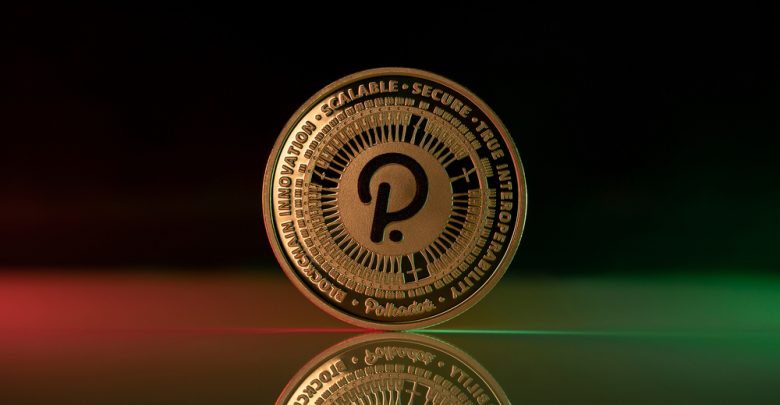All You Need To Know About Polkadot (DOT)

Blockchain technology dates back to the early launch of Bitcoin. Despite the fact that it has been hailed as a game-changing invention, there are several disadvantages to consider. Unlike traditional computer networks, blockchains apparently lack a connection with one another. By enabling data transmission across various chains, the introduction of compatibility and interoperability might lead to the development of more complex techniques and specialized services.
Developers have made attempts to “bridge” blockchains in the past. This has made connections between two chains such as Y and Z or the other way around really possible. Nevertheless, integrating many blockchains (imagine hundreds or thousands or even more) at about the same time continues to be a significant challenge, and efforts have been made to ensure that.
Polkadot was created as a means of bridging the gap between several blocks of this public ledger. Clearly, Polkadot is a mechanism that links blockchain networks, as you may guess from the name. As a result, value and data may now be transmitted across formerly pretty incompatible connections (Bitcoin and Ethereum, for instance). It is also intended to be both quick and flexible in order to suit the demands of the growing community better. The DOT token has been widely employed for staking and administration purposes. Moreover, DOT can be purchased or sold per your needs on Coinbase and some other cryptocurrency exchanges and platforms.
What is Polkadot?
In the same way that many cryptocurrencies are both a commodity that can be purchased, sold, and traded on exchanges such as Coinbase and a decentralized protocol, Polkadot is the very same.
The Polkadot infrastructure is intended to enable blockchains that are not tied to one other to securely communicate with one another, allowing value or data to move between, for example, between the Litecoin and Bitcoin blockchains even without the need for an intermediary. It is also intended to be fast and scalable, thanks to the usage of several parallel blockchains (sometimes known as “parachains”) that offload a significant portion of the computational requirements off the main blockchain.
Polkadot, which describes itself as an open-source system that is designed for everyone, promises to be the next stage in the growth of blockchain technologies. Dr. Gavin Wood, one of the co-founders of Ethereum, was the first to propose this notion. The team which is committed to the development and growth of Polkadot, intends to concentrate its attention on reliability, durability, and development in the future. In order to do this, it is required to provide the adequate infrastructure that will not only accommodate innovative concepts but will also guarantee that an adequate interoperable level is reached.
When it comes to the Polkadot ecosystem, each independent blockchain is referred to as a parachain (parallel blockchain), whereas the main chain is referred to as the Relay Chain. The concept is that parachains as well as the Relay Chain, will be able to readily exchange messages at any point in time without difficulty. Parachains might be thought of as being analogous to independent fragments in the upcoming deployment of ETH 2.0.
Substrate, which is a platform for developing cryptocurrencies and decentralized systems, enables any programmer, organization, or person to create their own bespoke parachains on their own servers. The customized chain remains functional with all parachains upon that Polkadot chain once it is joined to the Polkadot platform using the Polkadot protocol.
With this concept, developing cross-chain apps, goods, and experiences should be much easier with the wise implementation of Polkadot. Transferring data or assets between blockchains has not previously been conceivable on a broad scale. However, this is now doable. The connectivity validators are accountable for maintaining and verifying the data through many parachains, with a small number of auditors being able to secure several parachains at the very same time. Operations will be dispersed over numerous parachains by using these verifiers, which will increase the performance and reliability of the network.
How Does Polkadot Function?
Using the Polkadot network, you may create three different sorts of blockchains as per your needs: Relay, Parachains, and Bridges.
- Relay Chain
A transaction gets completed on the Polkadot blockchain via the Relay Chain, which is the primary blockchain for the project, and if you’d ask me, I would say it’s the most important one. The relay chain isolates the process of adding transaction records from the process of verifying similar transactions in order to gain faster speed and enhance work performance. Thus, according to tests conducted in 2020, this architecture enables Polkadot to perform more than 1,000 transactions per second. Isn’t that a crazy figure?
- Parachains
These bespoke blockchains take advantage of the computational capacity of the relay chain in order to check if the operations are valid in order to manifest data reliability and trustworthiness.
- Bridges
As you can depict from the name itself, bridges are used to connect the Polkadot platform to certain other blockchains and vice versa. Building bridges across blockchains like as Ethereum, Bitcoin, or EOS is now under progress. This is a really significant development as it will enable assets to be transferred without the need for a centralized exchange.
What Makes Up The Relay Chain?
Polkadot blockchain employs a new method of consensus, which it calls a nominated-proof-of-stake. This system enables anybody who stakes DOT by investing the coinage in a particular contract to fulfill one or more of the functions listed below, which are required for the system to function properly. However, it should be noted that individuals who stake DOT and carry out these functions are also entitled to win DOT rewards for their efforts.
- Collators
These are the nodes that operate and retain a comprehensive history for every parachain. They also consolidate parachain transaction information into pieces that are then added to the Relay Chain for processing and execution.
- Fishermen
These play a role in the safety and security of the Polkadot ecosystem. They keep an eye on the Polkadot connection and report suspected activity to panel members.
- Validators
These are used to check the data in parachain chunks. They also actually participate in consensus building and vote on various improvements to the communications infrastructure.
- Nominators
They are responsible for safeguarding the Relay Chain by choosing competent and reliable validators. They also stake the dots whenever required.
Polkadot Governance Infrastructure
Three roles make up a significant portion of the DOT infrastructure. They are as follows:
- DOT Holders
The owners and possessors of DOT tokens may choose to use their tickets to submit modifications to the networking and decide whether to accept big changes made by others. Anyone who acquires DOT assets has the ability to recommend improvements to the community and approve or deny substantial changes submitted by others.
- The Council
Council representatives are appointed by DOT bearers and are accountable for developing modifications to the program as well as deciding which amendments requested by DOT holders have been implemented into the technology. Usual DOT holders’ recommendations need a greater number of votes to be adopted than those proposed by Committee members.
- The Technical Committee
This comprises teams currently engaged in the construction of Polkadot. Moreover, this organization has the authority to make extraordinary suggestions in the emergency situations. Representatives of the committee of technicians are selected by a vote of the Council.
What Makes Polkadot so Important?
At the moment, the vast majority of blockchains run separately as independent units. Blockchains find it extremely difficult to interact and exchange information with each other a result of this limitation. Polkadot’s infrastructure is working to resolve this condition, as well as a number of similar structural challenges too.
Scalability
When used in isolation, blockchains can only handle a finite volume of operations at a time. In order to facilitate the execution of transactions on several chains simultaneously, the Polkadot system links blockchains together. This eliminates congestion that occurs when transactions are processed one at a time on traditional blockchain technology such as Bitcoin. This, in turn, has a major positive impact on scalability.
The majority of blockchains are designed to serve an intended function. Consequently, programmers must make the tough choice of which functionalities to add and what to exclude from the final product. It is practically inconceivable for any ledger to have all of the desired features due to insufficient resources, as well as the increasing likelihood of flawed programming and technical glitches with each new feature introduced in the system.
In addition, Polkadot enables blockchains, which have been made using Substrate (a blockchain-building kit), to operate on its platform without the need for additional software. Team members may make use of ready-to-use function blocks and thereby create and modify their network more effectively and quickly.
Network Interoperability
Blockchains that are connected to the Polkadot network are willing to share knowledge and capabilities without the need for centralized companies. Polkadot supports interoperability and cross-chain connection, in contrast to prior blockchains, which generally functioned as stand-alone solutions until Polkadot was created. Members will be able to transmit data across chains as a result, which will pave the way for the development of innovative new services.
Self-Governance
The Polkadot Network enables DOT token holders as well as the Polkadot committee to propose suggestions to existing token holders, which have been subsequently voted on by the token holders themselves. It makes no difference if the plan was made by DOT owners or by the governing Council; it must ultimately pass via a constitutional or a referendum process. The resolution is subsequently put to the vote by all DOT holders, who are weighted according to their investment. Code updates that have been consented to are activated immediately and almost automatically in the connection.
Every one of these elements is essential for the development of a decentralized internet, which is often alluded to as Web 3.0. In the hereafter, Web 3.0 will transform centralized apps into decentralized, trust-free technologies, enabling consumers and robots to communicate with information, property, and peer-to-peer without the need for private parties to mediate their interactions.
In the long run, Polkadot wants to contribute to the advancement of web 3.0 by serving as a foundation for all blockchain technology that facilitates collaboration, in a similar way to how HTML enables servers, applications, and viewers to connect. Their solution is to take responsibility of the time-consuming and expensive mining procedures and free up designers’ time so that they can concentrate on developing more significant elements such as dapp or smart contract features.
Benefits and Risks Associated with Polkadot
Benefits
Polkadot helps digital platforms to be connected to one another. This is critical because it assures interconnection between distributed ledgers and blockchains developed on various networks, which is essential for the development of decentralized applications.
It has a strong technical capability. Its team is made up of highly experienced experts who are concentrated on continual research and development. Moreover, the team of Polkadot has collaborated with various high-profile consultants who are well-known in the blockchain space, including Gavin Wood (co-founder of Ethereum), Vlad Zamfir, and so forth.
The team has indicated that they would want Polkadot to become as versatile as practicable so that it can handle any form of blockchain technology. That’s a big advantage to consider, too!
In addition to multiple live broadcasts, meetings, and press releases, the company has maintained an extraordinarily high degree of openness for its customers. Everything is really transparent, and you’ll always know what’s going on.
Risks
One of the biggest challenges is the high level of competition. There are many other interoperability initiatives in construction, such as Ark, AION, Wanchain, and so on. All of these schemes are anticipated to have a substantial influence on Polkadot’s future growth prospects.
Multiple teams, each with their own objective, will fight to be the most successful in this area. The risk-taking abilities of certain organizations will differ from those of others. Consequently, there may be conflict amongst them, and it could take more time for Polkadot to get going.
To prevent a back-and-forth conflict or manifest complications, the company has said that they will not communicate with the audience on Telegram and perhaps other platforms. Hence, the Polkadot community isn’t really open to dialog.
Difference Between Polkadot and Ethereum
In light of the fact that they both have a well-known creator, there has also been significant discussion regarding what distinguishes Polkadot from Ethereum. Nevertheless, Polkadot and the next significant upgrade to Ethereum, branded as Ethereum 2.0, have a great deal in common in terms of architecture and function with Eth, as can be seen below.
Both of these platforms have a central chain where operations are completed, and they both allow for the establishment of numerous smaller blockchains that can make use of the main blockchain’s capabilities. These systems also rely on staking rather than mining to keep the system updated and functioning properly.
Persistent research has been undertaken to determine how operations across platforms may be made transparent. Parity, for particular, has built infrastructure that is intended for customers who seek to construct apps that leverage Ethereum’s software and ecosystem but that operate on the Polkadot blockchain instead of the Ethereum blockchain. Finally, programmers could likewise use Polkadot’s design methodology to create a new version of the Ethereum network that could be employed to make up their very own crypto models.
Conclusion
Polkadot is being constructed with the goal of becoming the “Internet of blockchain,” allowing private channels to function on the very same system. This technology is likewise assisting in the resolution of current issues such as scalability and interoperability among different links and making the implementation of cryptocurrency more accessible to the general public.
In light of the fact that there is no ideal ledger that can accommodate all operations in the cryptocurrency industry, Polkadot will aid in the creation of chains that are more focused and concentrated chains, which would surely result in the birth of an overall, more efficient blockchain network. Polkadot’s capabilities in the coming are worth the faith since it was built by professionals who are the finest in the business regarding cryptocurrency innovation and technology.
Polkadot has always been the subject of a slew of other blockchain-related initiatives, and that makes utter sense, though. A growing technology, Polkadot, which is all set to underpass issues associated with the conventional blockchain, would obviously be a target of many technologists for all good reasons. The majority of other organizations likewise pay close attention to what Polkadot is up to these days.
With the information provided above, I believe you have better understood what Polkadot is. This article is intended to provide you with a thorough understanding of the topic; thus, there really is no investment advice. Before making investment decisions, you must perform your own investigation and be accountable for your own funds. I hope this article will help you.
Tokenhell produces content exposure for over 5,000 crypto companies and you can be one of them too! Contact at info@tokenhell.com if you have any questions. Cryptocurrencies are highly volatile, conduct your own research before making any investment decisions. Some of the posts on this website are guest posts or paid posts that are not written by Tokenhell authors (namely Crypto Cable , Sponsored Articles and Press Release content) and the views expressed in these types of posts do not reflect the views of this website. Tokenhell is not responsible for the content, accuracy, quality, advertising, products or any other content or banners (ad space) posted on the site. Read full terms and conditions / disclaimer.







